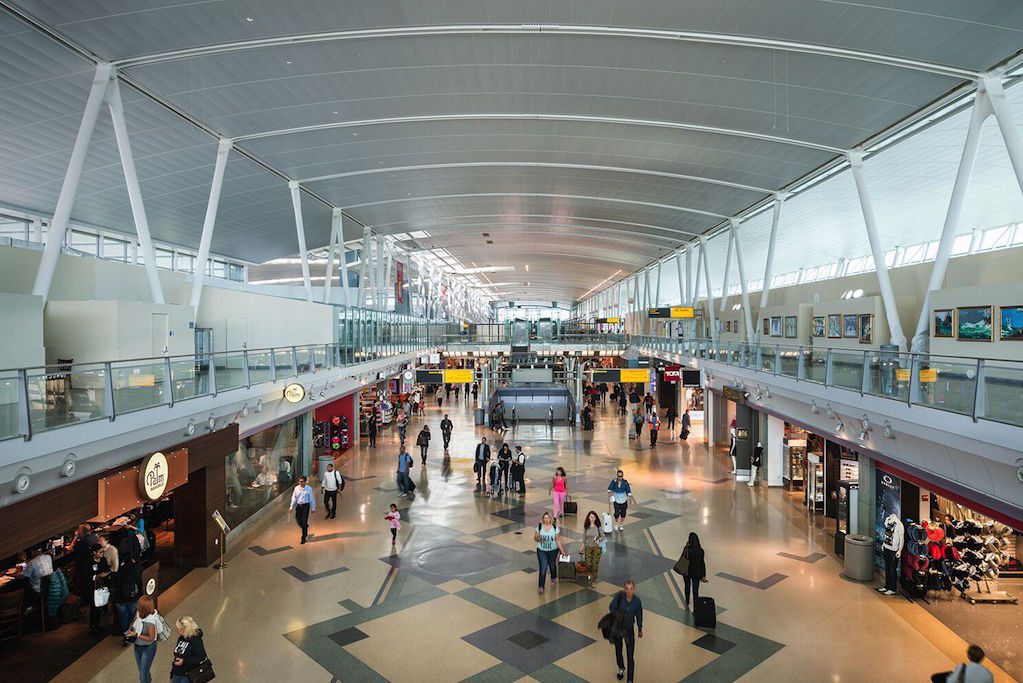As lawmakers debate whether to permit more private companies to shape American infrastructure, the Royal Schiphol Group, the first private operator of a U.S. airport terminal, at New York JFK, may want to add to its U.S. portfolio, an executive for the company said in an interview.
Schiphol Group is “looking actively for opportunities to increase their footprint in the U.S.,” said Gert-Jan de Graaff, president and CEO of JFK International Air Terminal LLC, which controls JFK’s Terminal 4. “They believe they can add value to airports in this country. Schiphol Group owns JFK International Air Terminal LLC.
It’s an unusual concept in the United States, where municipalities control many airports and terminals, operating them more like bureaucratic departments than private enterprise. But elsewhere, private companies rule, using their expertise to reduce costs for airlines while improving customer amenities. In June, de Graaff will leave for a private firm in Brisbane, Australia that manages not just one terminal, but the entire Brisbane airport.
The Trump administration floated the idea of the government selling two airports in Washington, D.C., and while that could happen, it seems more likely U.S. airports would move more slowly, perhaps letting more private firms control more terminals, rather than entire airports.
“I have seen in the last two years a lot of discussion about public-private partnership,” de Graaff said. “There is definitely an interest in that way of funding.”
It’s a model that has worked well at Terminal 4 for more than 20 years, de Graaff said. The terminal is used by 34 airlines, with Delta Air Lines the biggest tenant, accounting for 60 percent of passengers.
One of its operator’s strengths is improving retail and food and beverage options. Airlines appreciate it, not only because they want to keep passengers happy, but also because terminal operators that make more revenue from shopping tend to keep rents lower for carriers. Public terminals operators do the same thing, but because they’re often municipal departments, it may not be their No. 1 priority.
“We do one thing in the world — that’s managing Terminal 4,” he said. “Government organizations try to please lots of bosses. Our task is more simple and targeted.”
Occasional Missteps
It’s not always easy. Last month, JFK airport suffered a multi-day meltdown after a massive snowstorm, and while the airport’s operator, the Port Authority of New York and New Jersey, took most of the blame, Terminal 4 had its own mishap after a water pipe broke because of the cold temperatures.
The pipe issue might have happened anywhere, but the snowstorm made clear a problem unique to JFK. Its six terminals are all operated by different groups, and the airport is controlled by another, the Port Authority. The terminals operate as separate enterprises, and don’t necessarily help each other during rough times. A plane scheduled to arrive at Terminal 4 generally can’t pull into a gate at Terminal 8, which is controlled by American Airlines.
The storm was a major issue, causing the airport to close for almost a day, and forcing flights to divert elsewhere. When it re-opened, most terminals were forced to accept far more arrivals than expected — both the regularly scheduled flights, as well as flights diverted the previous day. Most terminals didn’t have enough gates to accommodate them in a timely manner.
“It’s always very challenging to deal with winter conditions, and the aftermath of those winter conditions,” de Graaff said. “We had challenges in terms of capacity. It’s never easy when you have international airlines. They are launching some of the flights 12 or 14 hours before they arrive here.”
He said the terminal operator is discussing with the Port Authority how it can improve. “We are trying to find ways to better manage that and to see if we can improve the way we are dealing with those challenges,” he said.
Reputational challenges
Despite the snowstorm, de Graaff’s four-year stint mostly has been successful. Under his leadership, the terminal has been trying to differentiate itself a place passengers want to go.
In 2016, the terminal claims it was the first New York-area airport terminal to “brand itself,” and recently launched a website with an interactive terminal map and up-to-the-minute security and taxi wait times. The terminal is also on a community-building kick, and this week it has events to coincide with Valentine’s Day and Chinese New Year.
It has also shown itself to a slightly more nimble than other airport terminals, working with U.S. Customs and Border Protection to increase efficiency, and testing new biometric processes for boarding. And it will soon be the site of what American Express says is the world’s largest Centurion premium lounge.
It’s all good enough, but de Graaff said the overall airport still has some work to do on its reputation.
“JFK in general has not the best name in the world,” he said. “This airport is perceived to be not a world class airport. That’s partly because of the set up of the airport. We have six terminals at JFK. It is very difficult to provide passengers with a consistent experience and I think that impacts how people perceived the quality of the airport.”
Subscribe to Skift Pro to get unlimited access to stories like these
{{monthly_count}} of {{monthly_limit}} Free Stories Read
Subscribe NowAlready a member? Sign in here
Subscribe to Skift Pro to get unlimited access to stories like these
Your story count resets on {{monthly_reset}}
Already a member? Sign in here
Subscribe to Skift Pro to get unlimited access to stories like these
Already a member? Sign in here
